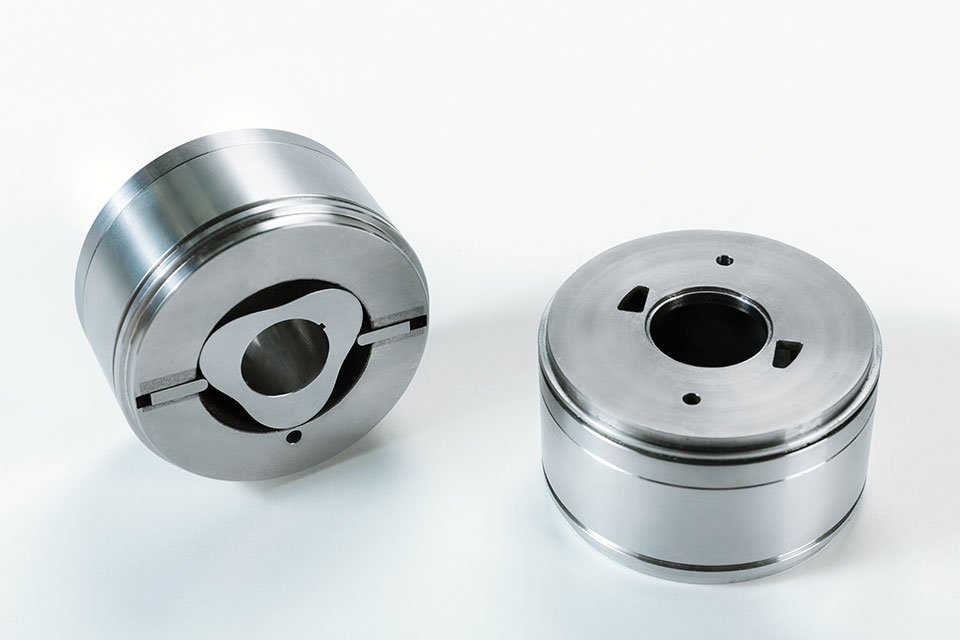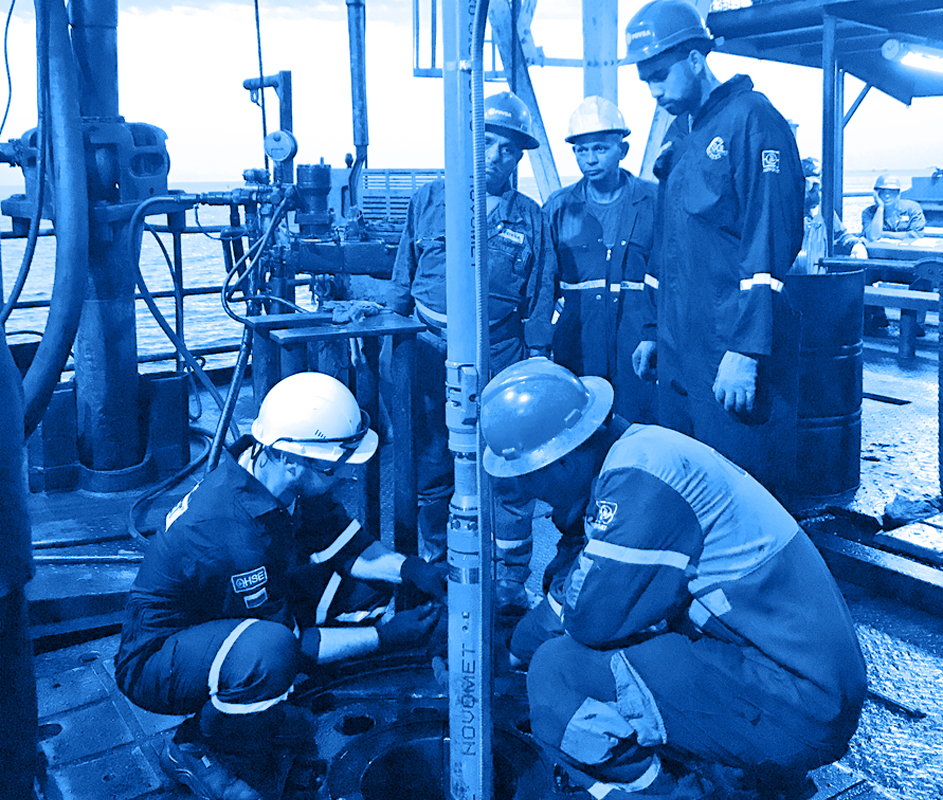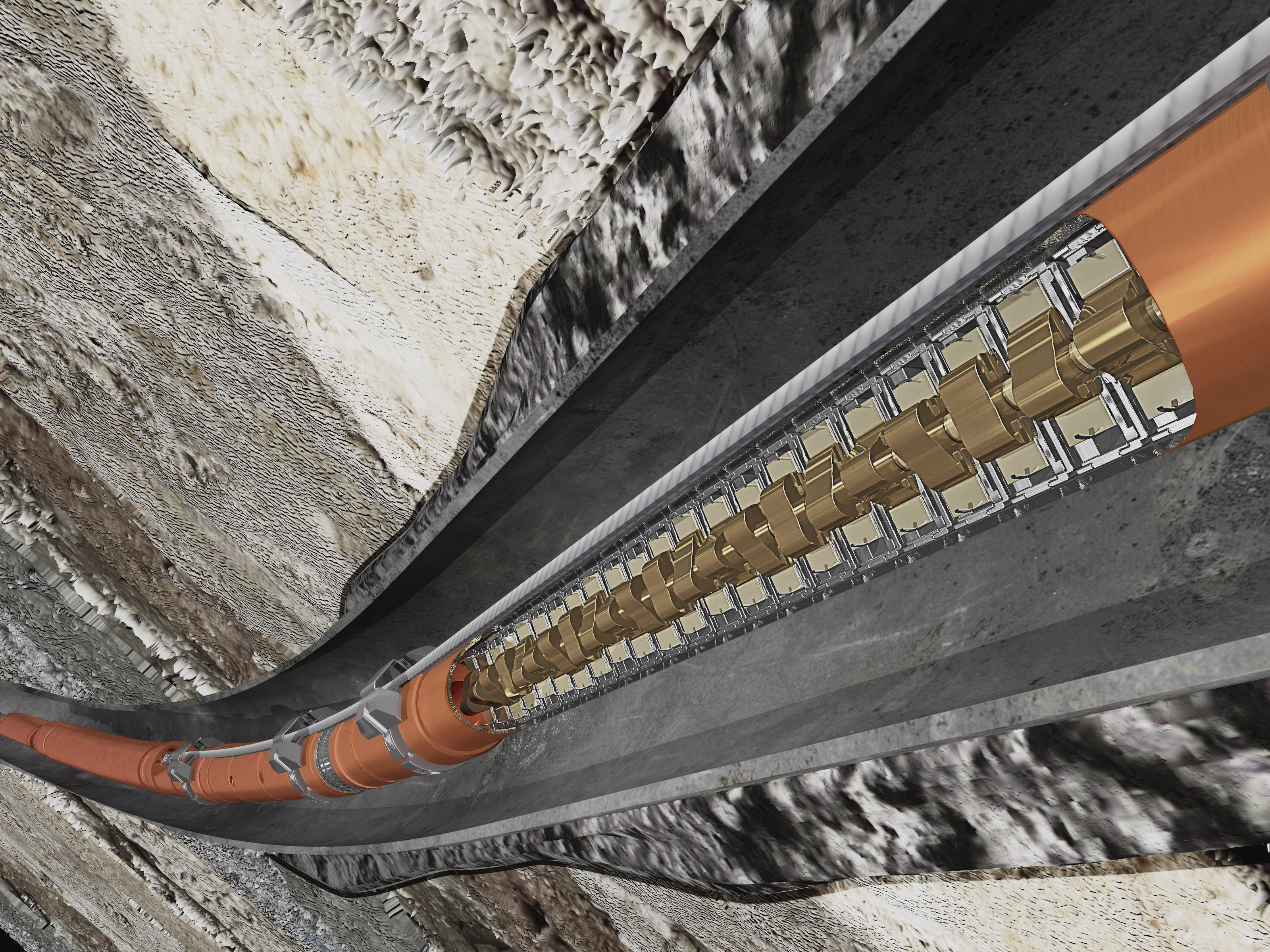ROTARY DISPLACEMENT CYLINDRICAL PUMPS
 Novomet rotary displacement cylindrical pumps
Novomet rotary displacement cylindrical pumps
Our rotary displacement cylindrical pumps provide trouble-free operation in wells with low flow rates and in wells with highly viscous oil. It eliminates the need for elastomeric materials, which are the most vulnerable components in progressive cavity pumps (PCPs). Rather, it uses an all-metal stator and cam-type rotor to create metal-to-metal sealing.
The result is an all-new pump design that delivers superior lifting performance, efficiency, and runlife in low-flow conditions and heavy oil despite the presence of sand and gas.
BENEFITS

The rotary design pumps fluids ranging from 20 – 5,000 cSt

The downhole motor eliminates regular rod-lift maintenance and wear

Metal-to-metal sealing eliminates the elastomers that cause PCPs to fail in the presence of gas
applications
- High viscosity oil wells
- Low-flow-rate wells
- Wells with high sand content
- Replacement for PCP and rod lift systems
capabilities
- Produce fluids with viscosity ratings between 20 and 5,000 cSt
- Produce wells with flow rates from 30–315 bbl/d (5–50 m3/d)
- Performs in temperatures up to 180°F (100°C)
features
- The rotary pump lifts highly viscous, sandy fluid at low flow rates
- Metal-to-metal sealing eliminates elastomers, the most common failure point in PCPs
- The downhole motor eliminates rod wear and maintenance, the most common failure point and cost point for rod lift systems

Efficient heavy oil production—Just out of reach
For years, organizations like the United States Geological Service and the World Resources Institute have reported that nearly half of the world’s oil reserves consist of heavy oil and natural bitumen deposits (page 14 of Heavy Oil and Natural Bitumen Resources in Geological Basins of the World). Because of its high viscosity, recovery rates for heavy oil range between an abysmal 5% and a more optimistic 30%.
Heavy oil production has relied largely on enhanced oil recovery (EOR) technologies like cold heavy oil production with sand (CHOPS), steam-assisted gravity drainage (SAGD), steam injection, surface pit mining, and others. All these solutions have varying degrees of inefficiencies. And they all create additional problems that cost money to solve, reducing operator profit.
Until now—With our high-viscosity heavy oil pump
The Novomet rotary displacement pump is the first pump of its kind. It is designed for high-viscous fluids—from 20–5,000 cSt—and the low flow rates typical of heavy oil reserves—from 30–315 bbl/d (5–50 m3/d). It features all-metal rotor and stator components powered by our industry-leading permanent magnet motor. The all-metal design increases runlife compared to technologies that depend on elastomers because it provides exceptional erosion tolerance in high-sand wells and eliminates elastomeric breakdown caused by gas pockets. The rotary displacement pump delivers more efficiency as viscosity rises, providing a production solution that doesn’t involve complicated and costly EOR tools and processes.
The low-flow-rate problem
As oil and gas wells mature, reservoir pressure drops, flow rates decline, and gas levels tend to rise. The combination of low flow and gas can cripple an electrical submersible pump (ESP).
Rod lift doesn’t cut it
Many operators give in and install a rod lift system. The problem with rod lift systems is they require annual or bi-annual maintenance and they can cause serious damage to the tubing that will require a workover for repairs. Rod lift systems are especially hard on wells with doglegs, and can’t be placed deep enough to provide long-term production in horizontal wells.
PCPs rely on elastomers
Another alternative in low-flow wells is to install a progressive cavity pump (PCP). In many wells this solution works fine, either as a top-drive PCP or when combined with a permanent magnet motor downhole in a bottom-drive configuration. But in wells with nominal levels of gas or sand, the elastomers in the PCP stator break down, limiting system life.
TECHNICAL CHARACTERISTICS

|
Size (RU) |
Size |
Head pressure |
Viscosity |
Efficiency |
Speed range |
Rated speed |
|
5 |
3.62 in. |
14 m/stage at 1 cSt |
20-5000 cSt |
23% at 1 cSt |
500–1000 rpm |
750 rpm |
|
92 mm |
30 m/stage at 26 cSt |
40% at 30 cSt |
||||
|
5A |
4.06 in. |
32 m/stage at 1 cSt |
20-5000 cSt |
25% at 1 cSt |
500–1000 rpm |
1000 rpm |
|
103 mm |
100 m/stage at 100 cSt |
40% at 100 cSt |
The new low-flow well solution
The rotary displacement pump is a great replacement for an ESP, PCP, or rod lift system struggling with solids, gas, and waning head pressure. It uses a cam-type rotor to build enough pressure to lift hydrocarbons to the surface in wells producing as few as 30 bbl/d.
Advantages over rod lift systems
Unlike rod lift systems, the rotary pump requires no ongoing maintenance, will not damage tubing, and can be set as deep as 9,800 ft (3000 m). It also reduces the surface footprint and profile while virtually eliminating surface noise.
- Smaller surface footprint and profile
- Can be set as deep as 9,800 ft (3000 m)
- Doesn’t require regular maintenance
- Will not cause tubing damage
Advantages over PCPs
Unlike PCPs that rely on elastomer to create compression, the rotary displacement pump uses all-metal components to dramatically reduce solids erosion and eliminate elastomeric ruptures that occur with gas pockets.
- Eliminates the weakest component of the system—elastomers
- Reduces erosion from solids and system damage caused by gas pockets
Advantages over ESPs
Unlike ESPs, the rotary displacement pump is more efficient as viscosity increases. So the higher the viscosity, the better the system performs.
- Eliminates restarts and cycling caused by low flow and gas
- Operates better in high-viscosity fluids
